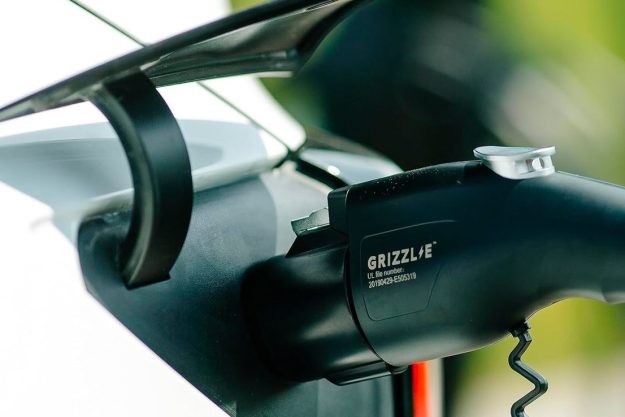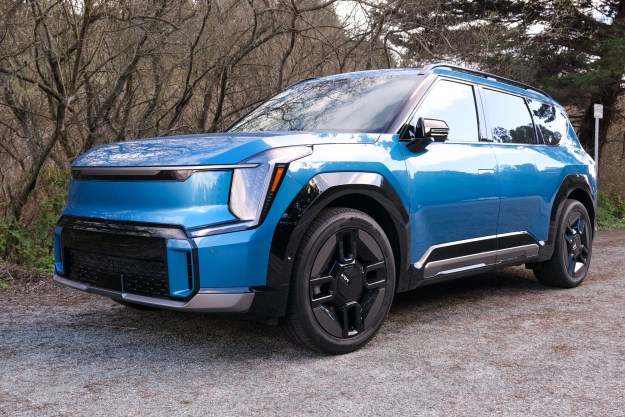
To help enthusiasts who want to know what’s really going on under the hood, Smith has written The Car Hacker’s Handbook, available now in both paperback and e-book editions from No Starch Press. The book is currently the top seller in its category on amazon.com. Digital Trends caught up with Smith for a discussion of the issues he raises in the book.

The Car Hacker’s Handbook is a comprehensive guide to reverse-engineering and understanding the digital control systems in a modern vehicle. The book includes information on building your own test beds for analyzing the software in a vehicle’s control computers as well as background information on the vulnerabilities inherent in infotainment and two-way connectivity systems.
The result is a practical how-to guide for understanding and manipulating the software that controls virtually every function of a modern car.
Black hat, white hat
As you read The Car Hacker’s Handbook, the first thing that comes to mind is trouble. Malicious individuals could use the information and techniques described in this book to take control of people’s automobiles and use that control to demand ransoms, cause accidents, or even commit terrorism.
“If you knew that there was a vulnerability in a particular make and model of vehicle, you could have that ready to go as the car drove by.”
“The risk concerns me,” Smith admited. “But one thing I’ve learned is that keeping things to yourself works for the black hats. Once you shine a light on things, they get fixed. So if you’re not talking about it, that’s a worse situation. Sometimes it’s off-putting for industries when a researcher says there’s a problem with a product, so we do have to be sensitive. We have to play nice so we can all get safer sooner.”
Yet as previous researchers and hackers have shown, the potential for trouble is very real.
“Your research really needs to happen on test equipment that you build yourself. In that regard, you’re not actively hacking a vehicle that’s driving down the road,” Smith tells Digital Trends. “That being said, it is feasible to make an exploit using your own research and your own equipment that would be able to be deployed quickly. If you knew that there was a vulnerability in a particular make and model of vehicle, you could have that ready to go as the car drove by.”
Sizing up the problem
The average new car now carries about 100 million lines of software code. All that code is required to operate various systems throughout the vehicle, including engine and transmission management, traction and stability controls, and more. About 20 million lines of code are required just to run a standard navigation, infotainment, and connectivity system, and that’s one of the biggest areas of vulnerability.
Researchers Chris Valasek and Charlie Miller successfully hacked several cars through their data communications modules and in some cases managed to take substantial control of moving vehicles. Valasek and Miller’s exploits raised concerns about inadequate security provisions throughout the automotive industry, and prompted automakers to tighten up their safeguards.
What Smith’s book does is expose the tools and techniques that researchers use to identify and then exploit weaknesses in production cars. Starting with the CAN bus that most modern cars use as an onboard network, Smith takes the reader through the steps necessary to access the engine management system as well as the infotainment and communications systems. The book also covers how to write exploits and transfer them into a vehicle via the vehicle’s wireless connectivity systems.
Crowdsourcing security and compliance
One key result of the book is less obvious: The techniques of research and analysis described will enable widespread analysis of any automaker’s operating code. This is good, the author thinks.
The bar for automotive software quality just got raised.
Smith believes that private researchers will spot security holes, but also could potentially uncover intentional malfeasance.
“If you get more eyes on the problem, it’s harder to get away with stuff,” Smith pointed out. “Even just the threat of knowing that people are allowed to look at things will make others think twice about putting backdoors in place.”
Performance tuners and the EPA
The book covers engine management programming and how to alter the manufacturer’s code to increase a car’s power output. This is an area where the amateur may skirt very close to violating Federal law and regulations imposed by the EPA and Dept. of Transportation. It is illegal to tamper with any emissions control device, and a car’s engine management software is very much part of the emission control system.
“Of course it’s not good to add pollutants, but at the same time, we’re talking about 1 percent of people who are performance tuners,” Smith explained. “If we’re going to lock out people because of that fear, then you’re going to miss people like Volkswagen, which disabled an entire fleet of vehicles. In my mind, when the EPA came out with those rules, it wasn’t for the person who makes a race car and runs it around on Sunday. It was for fleets of vehicles.”
Open garages and responsibility
Smith is one of the founders of Open Garages, a loose organization dedicated to providing public access, documentation, and the tools necessary to understand today’s modern vehicle systems. The organization is seeking to bring the ethos of open source software to the automobile world, and this book is part of that effort. Smith is careful to caution that if you break something in your car, you cannot expect the automaker to fix it for you.
“I recommend a switch or a jumper on the vehicle’s computer that disables the forcing of code-signed updates [from the automaker],” Smith said. “Now granted, when you do that, the secure boot loader should mark the car as tainted. So if you cause any damage to the engine, it’s on you. If you sell the car to anyone else, it would be obvious that the car was in its original factory-safe state or if it had been tampered with. That’s the same model Google uses with Chromebooks. I like that model, and I’d really like to see that.”
Don’t steal this book
Every so often, a book is published that pushes the boundaries of a controversial topic. Abbie Hoffman’s classic Steal This Book, published in 1971, detailed how to use and abuse government anti-poverty programs and charities, including how to cheat and steal effectively.
At the time, outraged people warned that Steal This Book posed a serious threat to continued freedom of the press — but it didn’t happen that way. People did steal the book, which led to bookstores keeping it under lock and key. Today, it’s a collector’s item and the material in it is simply quaint.
The Car Hacker’s Handbook is much the same. The information in this book is controversial, but not truly threatening. Malefactors who want to steal your car aren’t likely to spend months decoding assembly language programming to take control of your anti-lock braking system – they’d rather jump you at a stoplight.
This book is a wake-up call to automakers, legislators, and regulators, announcing the fact that technology enthusiasts can and will continue to fiddle with their cars. The bar for automotive software quality just got raised.


